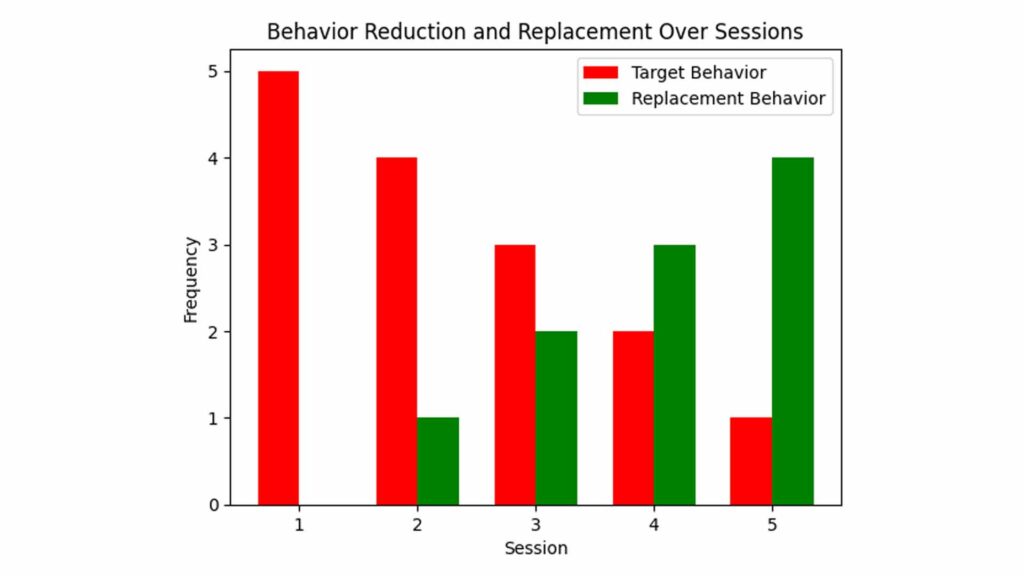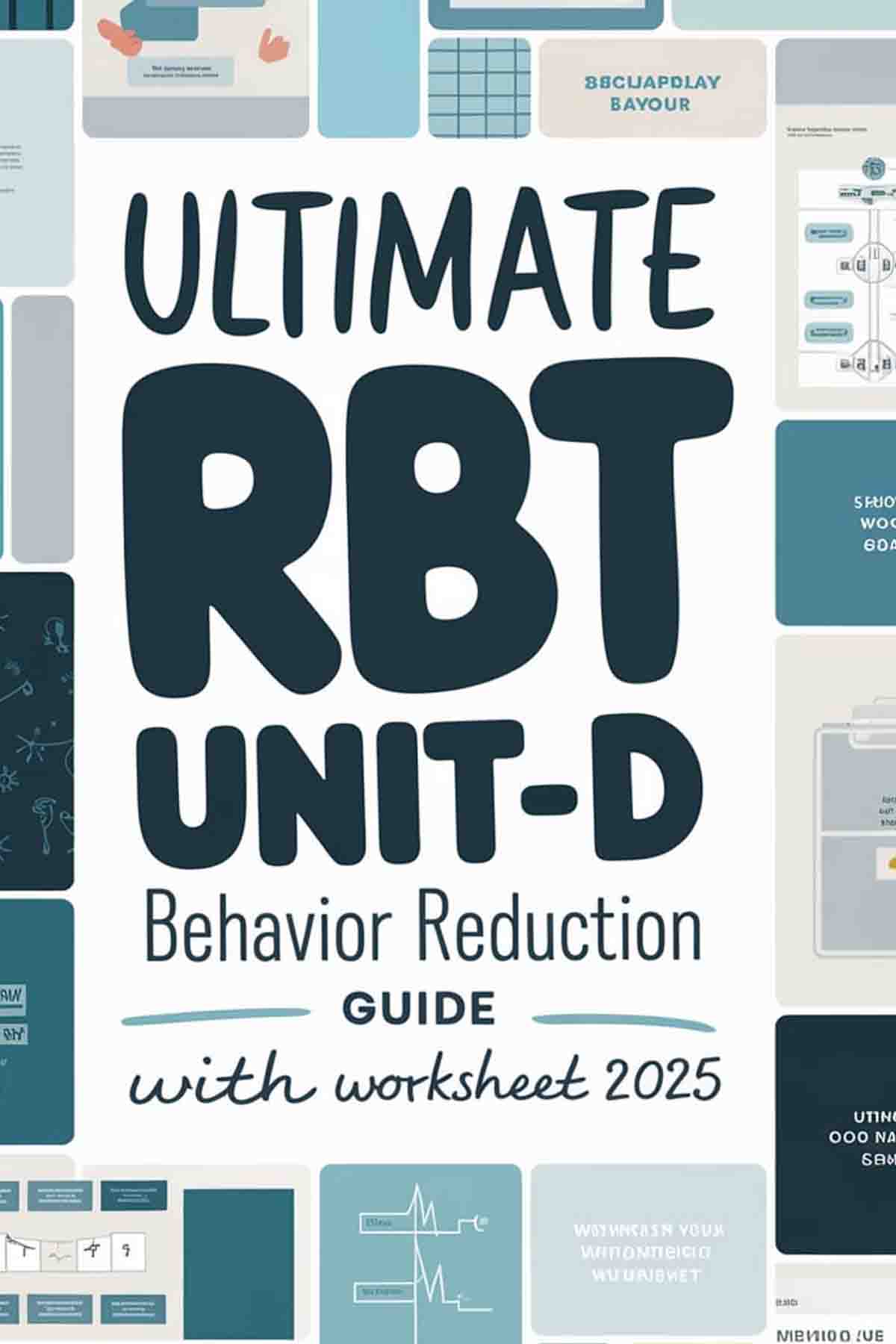This guide provides a comprehensive overview of Unit D: Behavior Reduction from the RBT Exam Study Guide.
Designed to prepare you for the Registered Behavior Technician exam (RBT), it covers key concepts, strategies, and ethical considerations in behavior reduction within Applied Behavior Analysis (ABA).
Whether you’re studying for the exam or seeking to deepen your understanding of your role as an RBT, this guide will equip you with the necessary knowledge and tools.
Behavior Reduction in ABA

Behavior reduction is a cornerstone of ABA therapy.
It focuses on decreasing challenging or interfering behaviors that hinder a client’s ability to learn, socialize, or function effectively.
These behaviors might include aggression, self-injury, tantrums, or elopement (running away).
The goal is not just to eliminate these behaviors but to replace them with appropriate alternatives that improve the client’s quality of life.
- Why It Matters: For individuals with autism or developmental delays, interfering behaviors can pose safety risks or impede progress in other areas, such as communication or skill acquisition.
- Key Note: Behavior reduction plans are tailored to clients who exhibit significant challenging behaviors—not every client will need one.
Behavior Reduction Plans (BIPs)
A Behavior Intervention Plan (BIP), also called a behavior reduction plan, is a detailed, individualized document developed by a Board Certified Behavior Analyst (BCBA) and implemented by RBTs and other team members.
It outlines strategies to prevent, manage, and reduce interfering behaviors.
Essential Components of a BIP
- Operational Definition: A precise, measurable description of the target behavior (e.g., “hitting defined as striking another person with an open hand”).
- Function of the Behavior: The reason the client engages in the behavior (e.g., attention-seeking, escape, access to items, or sensory stimulation).
- Antecedent Modifications: Changes to the environment or situation to prevent the behavior (e.g., reducing demands to prevent escape-motivated tantrums).
- Replacement Behaviors: Positive behaviors taught to replace the target behavior (e.g., teaching a child to say “help” instead of throwing objects).
- Consequence Manipulations: How to respond when the behavior occurs (e.g., withholding attention for attention-seeking behaviors while reinforcing appropriate requests).
- Data Collection: Methods to track the behavior’s frequency, duration, or intensity to evaluate progress.
- Crisis Prevention Plan: Safety protocols for emergencies, such as managing severe aggression or elopement.
Consistency is Key: All team members—RBTs, parents, and caregivers—must follow the BIP consistently for it to succeed.
Understanding the Function of Behavior
The function of a behavior is its purpose—what the client gains from engaging in it.
Identifying this function is critical for selecting effective interventions. The four common functions in ABA are:
- Attention: To gain attention from others (e.g., yelling to get a teacher’s focus).
- Escape/Avoidance: To avoid or escape a task or situation (e.g., refusing work to avoid effort).
- Access to Tangibles: To obtain a desired item or activity (e.g., crying to get a snack).
- Automatic/Sensory Reinforcement: For internal satisfaction or sensory input (e.g., rocking for self-soothing).
Why It’s Important: Interventions must align with the function. For example, if a behavior is escape-maintained, offering a break as a replacement behavior can address the underlying need.
Behavior Reduction Procedures
RBTs use evidence-based strategies to reduce challenging behaviors. Here are the primary procedures you’ll need to know:
A. Extinction
- What It Is: Stopping reinforcement for a behavior that was previously reinforced, causing it to decrease over time.
- Example: Ignoring a child’s whining (previously reinforced with attention) while praising them for asking politely.
- Clarification: Extinction isn’t punishment—it’s about removing the reward that sustains the behavior.
B. Differential Reinforcement
- What It Is: Reinforcing a desirable behavior while ignoring or not reinforcing the target behavior.
- Types:
- DRA (Differential Reinforcement of Alternative Behavior): Reinforcing a specific alternative (e.g., rewarding “please” instead of screaming).
- DRO (Differential Reinforcement of Other Behavior): Reinforcing the absence of the target behavior (e.g., giving a token for 10 minutes without hitting).
- Benefit: It promotes positive behaviors while reducing unwanted ones.
C. Antecedent Strategies
- What It Is: Adjusting the environment to prevent the behavior before it occurs.
- Examples:
- Using a timer to signal transitions and reduce anxiety.
- Offering choices to minimize escape behaviors.
- Advantage: Prevention is often easier and less disruptive than reacting to the behavior.
Role of the RBT in Behavior Reduction
RBTs are frontline implementers of behavior reduction plans, working under BCBA supervision. Your responsibilities include:
- Executing the BIP: Following the plan exactly as written.
- Collecting Data: Recording behavior occurrences to monitor progress.
- Reporting: Sharing observations or concerns with the BCBA.
- Safety: Following crisis protocols during emergencies.
Key Note: RBTs don’t design BIPs but provide critical feedback to refine them.
Ethical Considerations in Behavior Reduction
Behavior reduction must prioritize the client’s well-being and rights. Key ethical principles include:
- Client Dignity: Respecting the client’s autonomy and individuality.
- Informed Consent: Ensuring the client or guardian agrees to the plan.
- Least Restrictive Methods: Using the least invasive strategies possible.
- Professional Standards: Following the Behavior Analyst Certification Board (BACB) ethics code, including confidentiality.
Why It Matters: Ethical practices ensure interventions are safe, respectful, and effective.
Data Collection and Analysis
Tracking behavior is vital to assess the BIP’s success. Common data collection methods include:
- Frequency: Counting how often a behavior occurs (e.g., 5 tantrums per hour).
- Duration: Measuring how long it lasts (e.g., a tantrum lasting 3 minutes).
- Interval Recording: Noting if the behavior occurs within set time periods (e.g., every 30 seconds).
Purpose: Accurate data helps the BCBA adjust the plan and confirm the intervention works.
Study Tips and Resources for the RBT Exam
To ace Unit D on the RBT exam, use these strategies:
- Master the RBT Task List: Focus on Section D (Behavior Reduction) from the BACB website.
- Take Practice Exams: Test yourself with free or paid RBT mock exams online.
- Gain Experience: Work or volunteer in ABA settings to see behavior reduction in action.
- Use Study Tools: Review flashcards, watch ABA tutorials (e.g., YouTube’s “ABA Made Easy”), or use study apps like ABA. Rocks.
- Key Focus Areas: Memorize the functions of behavior, extinction, differential reinforcement, and BIP components.
Exam Tip: Flag tricky questions during the test and revisit them later to manage your time effectively.
Conclusion
Unit D: Behavior Reduction is essential for your success as an RBT and on the exam.
By mastering behavior reduction plans, understanding behavior functions, and adhering to ethical guidelines, you’ll be ready to support clients effectively.
Use this guide, practice consistently, and approach the exam with confidence.
Good luck on your path to becoming an RBT!

